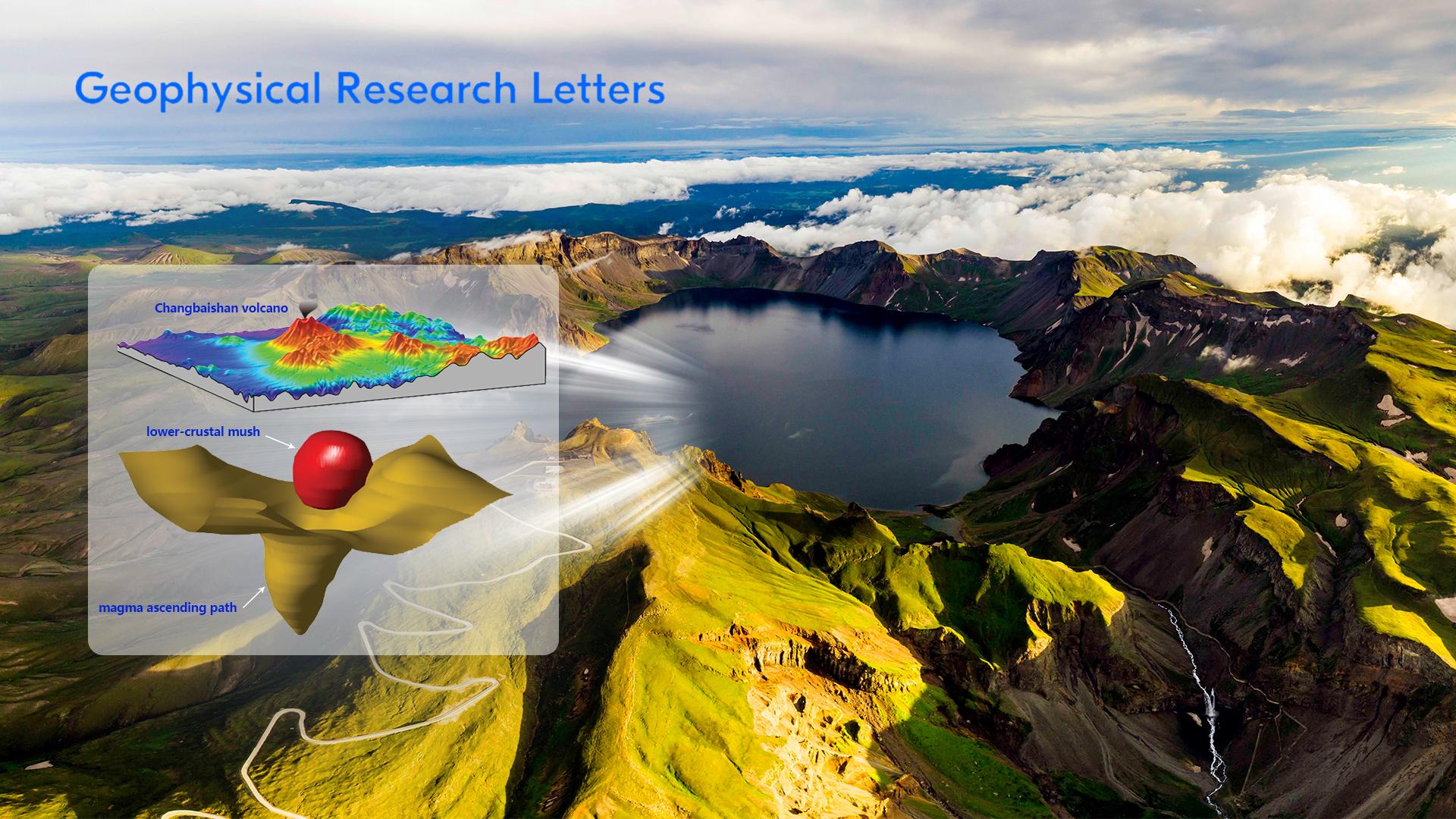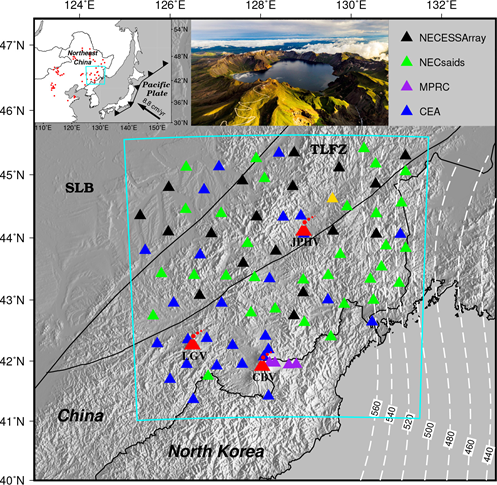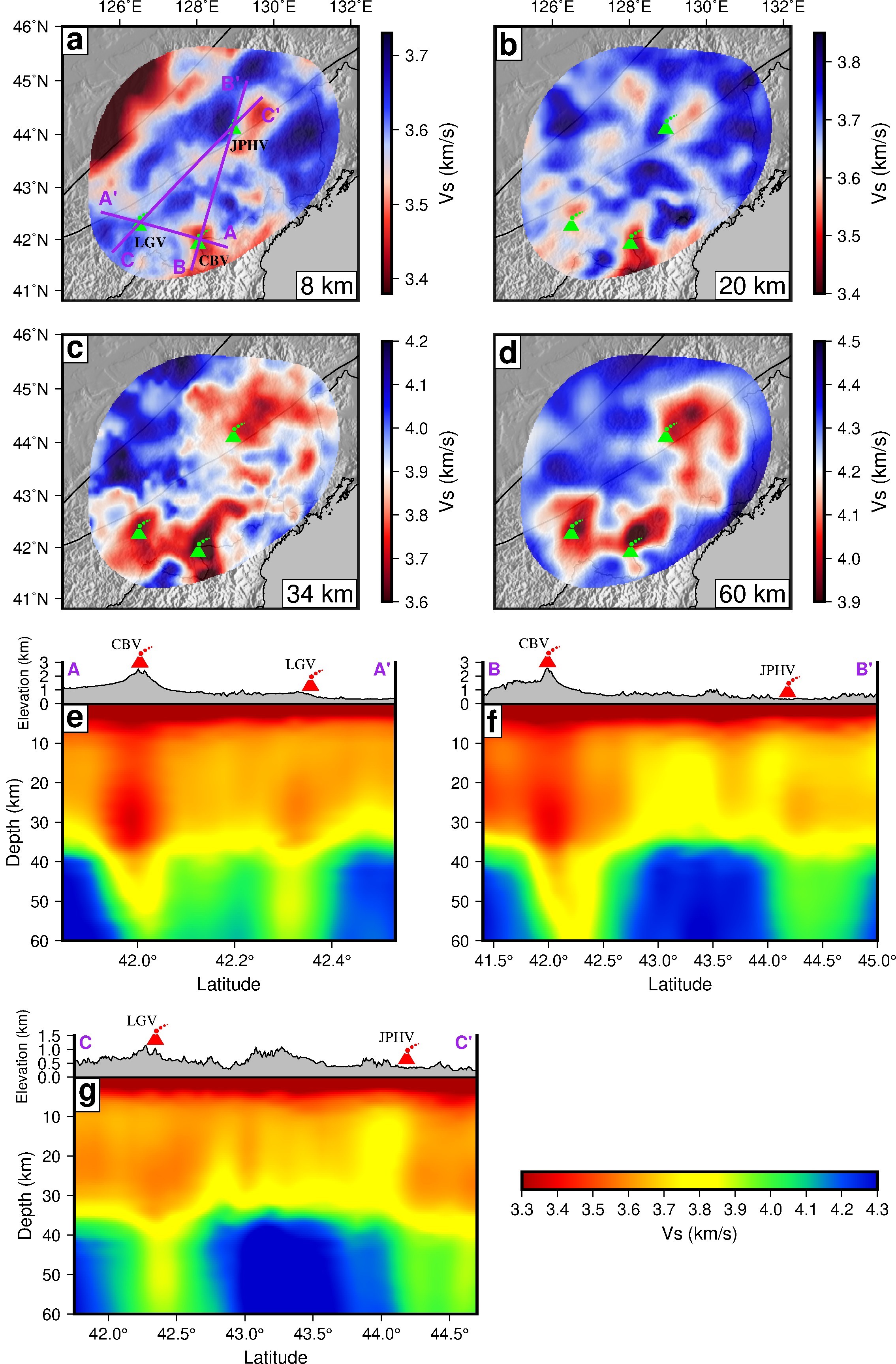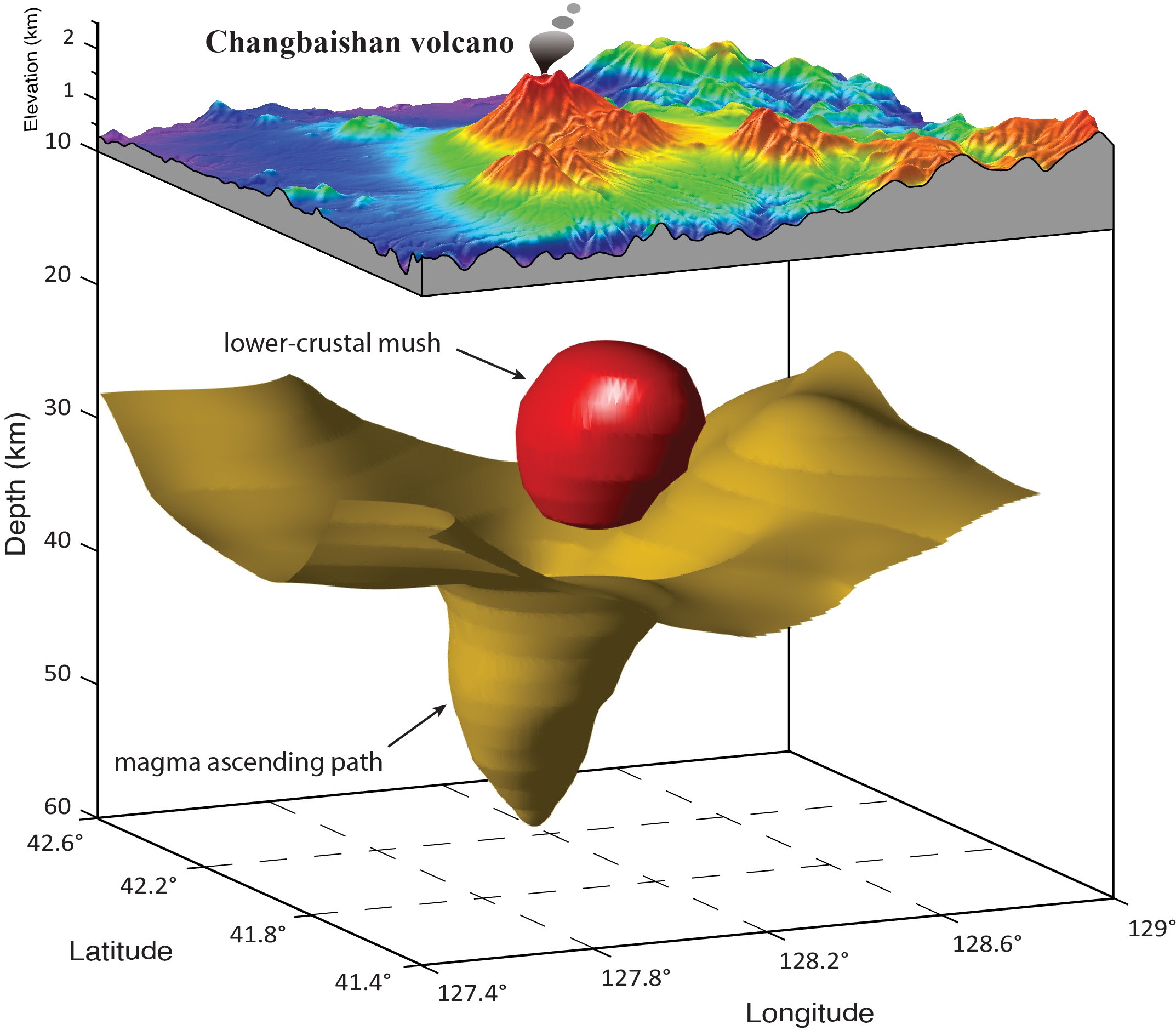Studies of volcanoes are essential for understanding the internal structure of the Earth and its evolution. Quaternary intraplate volcanism is widespread across northeast (NE) China, including Changbaishan volcano (CBV), Longgang volcano (LGV), and Jingpohu volcano (JPHV).
As the largest and most active intraplate volcanic center in NE Asia, CBV has exhibited a complex history of eruptions spanning from the Early Miocene (∼20 Ma) to the Holocene. Notably, a destructive eruption in 946 CE known as the “Millennium Eruption” with a global significance is identified as one of the largest explosive volcanic events ever recorded in human history, producing volcanic tephra and ash fallout recorded in NE China, Russian Far East, Korean Peninsula, Sea of Japan, and even the Greenland ice cores.
As an episode of unrest beneath CBV signified by earthquake swarms, ground inflation, and geochemical anomalies in gas emissions has occurred between 2002 and 2005, this has led to growing concerns over its potential eruption in the near future. Therefore, it has drawn much public attention from nearby countries and volcanologists worldwide.
The lithospheric structures beneath CBV have been extensively studied via a variety of geophysical approaches. However, significant uncertainties still exist concerning the physical state and spatial distribution of the underlying magmatic system. Resolving the heated debate over its lower-crustal thermal state as well as constraining the depth and lateral extent of the potential melt-bearing zone beneath CBV requires more detailed and accurate seismic imaging of the lithospheric structures.

Assistant Professor Zhen Guo’s research group has made significant progress in revealing the detailed 3D architecture of the magma plumbing system beneath CBV. Their research results, entitled “Crust and uppermost mantle magma plumbing system beneath Changbaishan intraplate volcano, China/North Korea, revealed by ambient noise adjoint tomography,” have been published in Geophysical Research Letters.

Figure 1. Map illustrating major tectonic features and distribution of seismic stations. Red volcano symbols represent the Holocene volcanic centers. Depth contours (in km) of the subducting Pacific slab are outlined by white-dashed lines. The Tanlu fault zone (TLFZ) is delineated by thin black lines and the Songliao basin (SLB) is located northwest of our study region. Seismic stations are marked by triangles with different colors explained in the legend (the top-right inset). The cyan box outlines the simulation region for the adjoint tomography. The top-left inset shows the study region on a larger scale. The top-middle inset is a panoramic view of the nearly 5-km-wide caldera of CBV.
In this study, Prof. Guo’s team built a high-resolution 3D crust and uppermost mantle S-wave velocity (Vs) model of CBV by applying advanced 3D full-waveform adjoint tomography on seismic ambient noise data recorded in both China and North Korea. They found significant low velocities in the lower crust of CBV, which was interpreted to be a deep crustal melt-bearing zone with an estimated melt fraction of ∼1.5%–3.6%. Three narrow channel-like low-velocity anomalies observed in the uppermost mantle below Changbaishan, Longgang, and Jingpohu volcanoes were suggested to reflect magma ascending passages that transport deep-sourced mantle melts upward.

Figure 2. (a–d) Horizontal slices of Vs at the upper, middle, lower crustal, and uppermost mantle depths. (e–g) Vertical cross-sections of Vs transecting two of CBV, LGV, and JPHV with their surface locations shown in (a).

Figure 3. A 3D view of the crust and uppermost mantle magma plumbing system beneath CBV. The red ellipsoid-like body, enclosed by an iso-surface of 3.45 km/s, is interpreted as the lower-crustal mush zone. In contrast, the yellowish curved surface represented by an iso-surface of 3.80 km/s indicates the magma’s ascending path in the uppermost mantle.
Their detailed tomographic images provide tight seismic constraints and deepen our understanding of the magma generation and evolution dynamics associated with the young intraplate volcanism in NE China.
Xingli Fan, a postdoctoral fellow at SUSTech, is the first author of this paper. Asst. Prof. Zhen Guo from SUSTech is the corresponding author. The co-authors include Dr. Yang Zhao from SUSTech and Prof. Qi-Fu Chen from the Institute of Geology and Geophysics, CAS. The Department of Ocean Science and Engineering at SUSTech is the first affiliation of this paper.
This work was supported by the National Natural Science Foundation of China (NSFC) and the Jilin Changbaishan Volcano National Observation and Research Station.
Paper link: https://agupubs.onlinelibrary.wiley.com/doi/abs/10.1029/2022GL098308
To read all stories about SUSTech science, subscribe to the monthly SUSTech Newsletter.
Proofread ByAdrian Cremin, Yingying XIA
Photo By